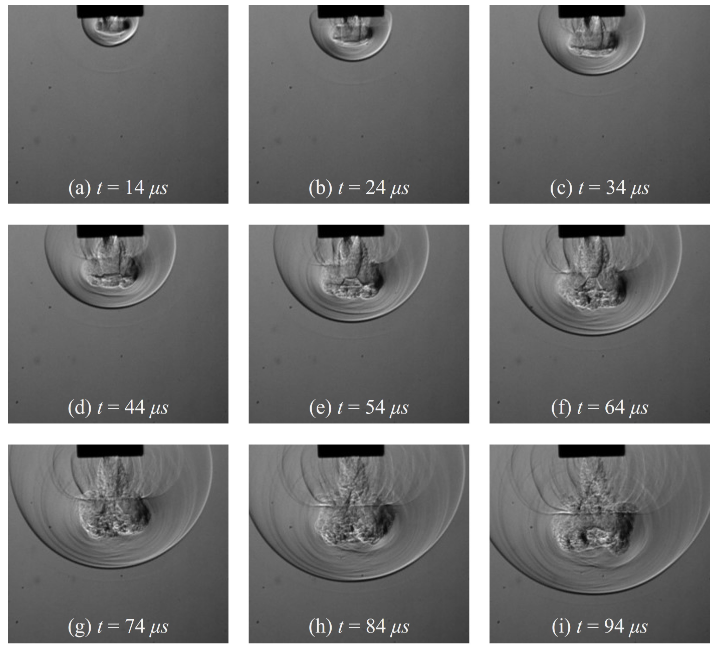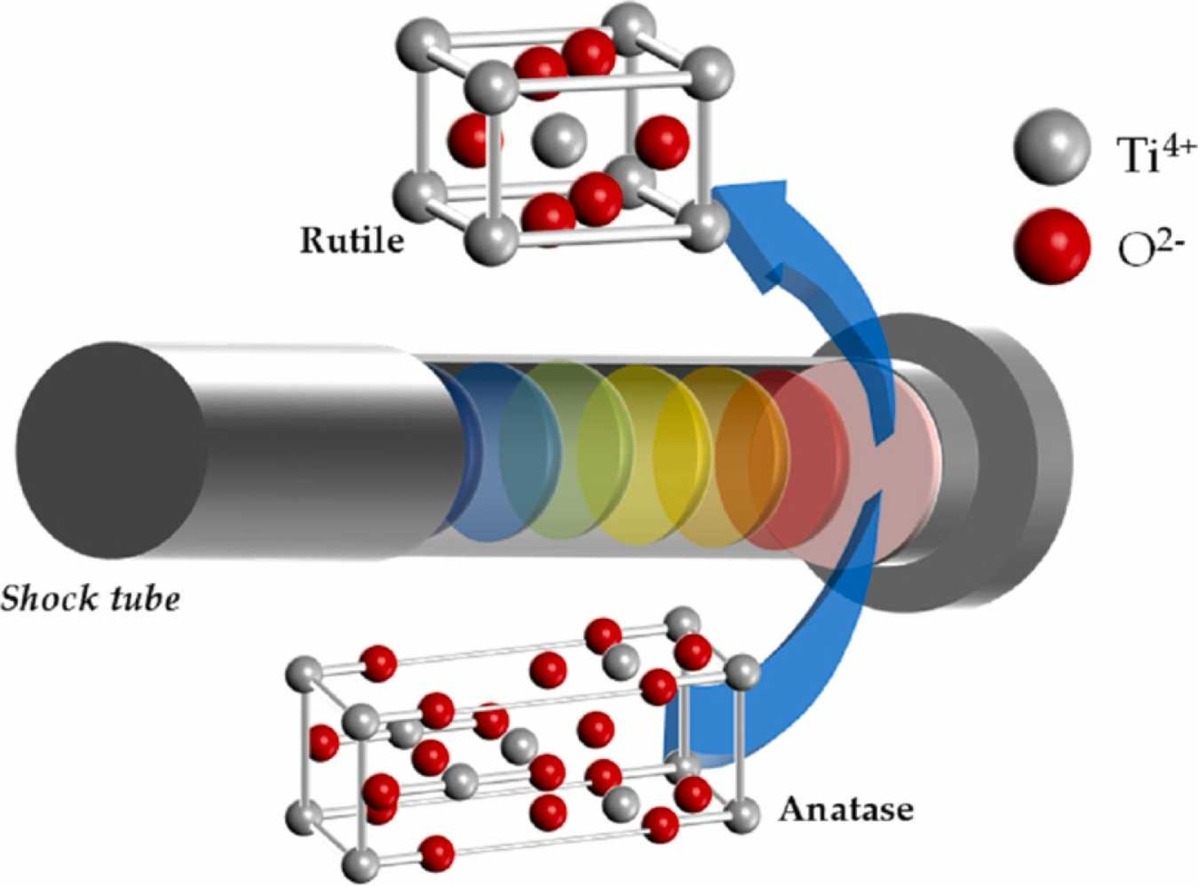

.png?sfvrsn=1b6bae1a_0) (FASTER)
(FASTER).png?sfvrsn=ac211bda_0)
Under this theme, one of our projects focus on the stability of anatase titania nanoparticles under exposure to repeated loading of shockwaves. The crystal structure and surface morphology were analyzed before and after the shockwave treatment using various characterization techniques. The onset of phase transformation from anatase to rutile is being investigated. In another project, we are developing a new needle-free vaccine delivery method that utilizes shockwaves produced by the combustion of a hydrogen-oxygen mixture generated in-situ. This device is designed to produce a high-speed jet stream capable of penetrating the skin, thereby ensuring effective immunization.

High-speed schlieren images showing the flow evolution from the open end of the miniature shock tube.
Exposure of materials to shockwaves is a useful method to understand changes in thermal, electrical, and mechanical properties due to high strain rates. By optimizing the strength of the shockwaves, novel synthesis methods and transformations can be induced. With respect to biomedical applications, shockwaves can extend the present-day applications like shock lithotripsy to technologies like needle-free vaccination, wound healing, and gene therapy.
